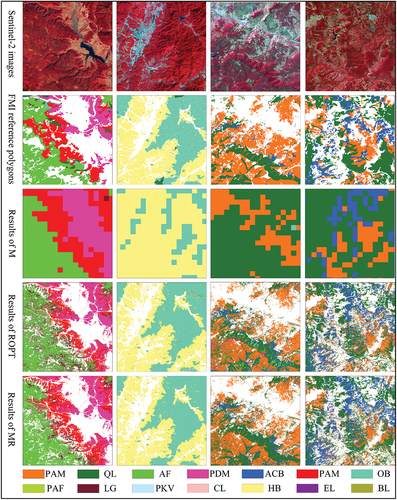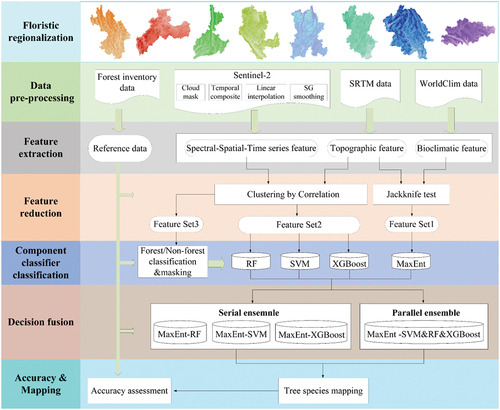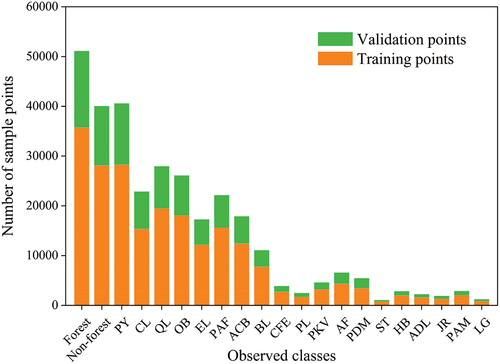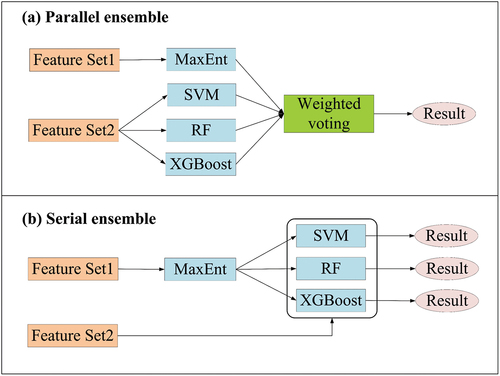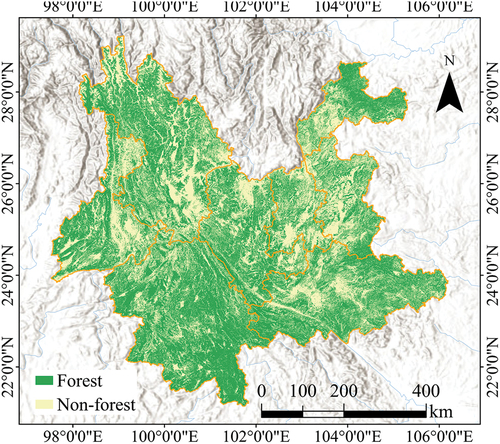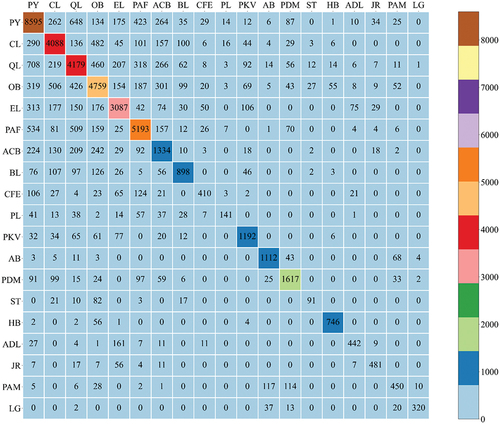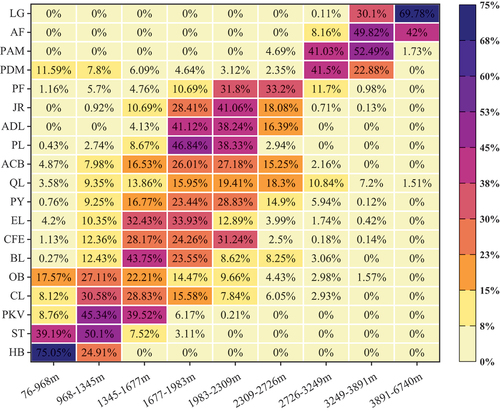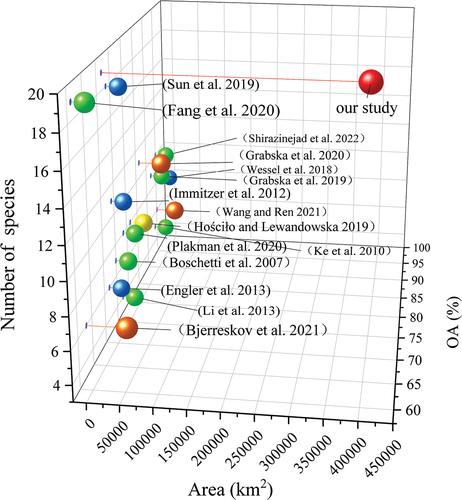Figures & data
Figure 1. (a) Yunnan, a global biodiversity hotspot region, located in southwestern China. (b) The elevation map of the Yunnan. (c) Eight distinct floristic sub-regions of Yunnan as basic unit for classification (Li et al. Citation2015).
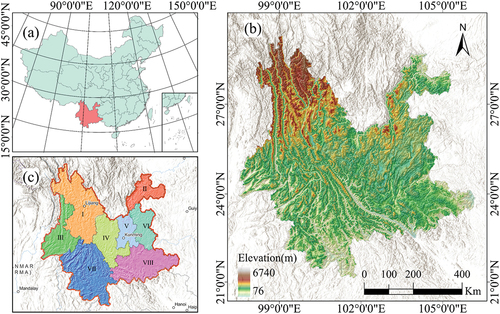
Figure 2. Valid observations of Sentinel-2 images in different periods. (a) 2016.1 to 2016.12; (b) 2015.7 to 2017.12; (c) 2016.1 to 2020.12.
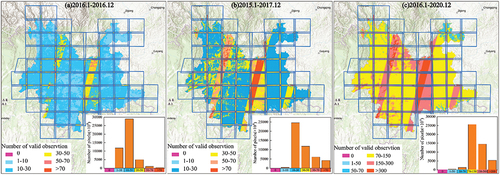
Table 1. Observed class and its acronym.
Table 2. The vegetation indices and corresponding formulas used in this study.
Table 3. The feature candidates for the forest mask generation.
Table 4. The feature candidates for forest stand species classification.
Table 5. Feature-classifier combinations explored in this study.
Figure 6. The numbers of optimal features and overall accuracies in the 8 sub-regions. Darker red tones mean higher accuracy for species classification.

Table 6. Accuracy assessment for different classification scenarios in each sub-region. The highest accuracies over all sub-regions are in bold.
Figure 8. The spatial details of the forest stand species map in Yunnan Province in 2016. Site a (103.279°E, 26.851°N); Site b (103.626°E, 25.910°N); Site c (103.031°E, 25.434°N); Site d (104.568°E, 23.026°N); Site e (101.347°E, 21.946°N); Site f (99.173°E, 25.318°N); Site g (99.688°E, 27.743°N).
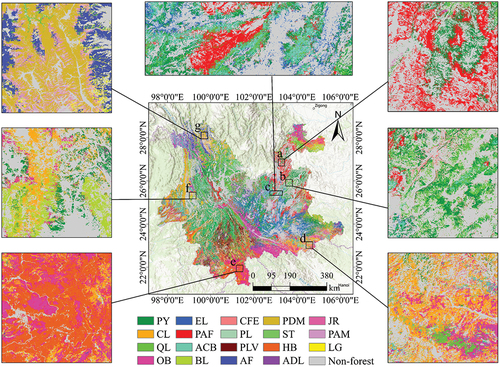
Figure 11. JM distances between species with (a) spectral bands and vegetation indices shown in , (b) spectral features and texture features, and (c) spectral features and time series features.
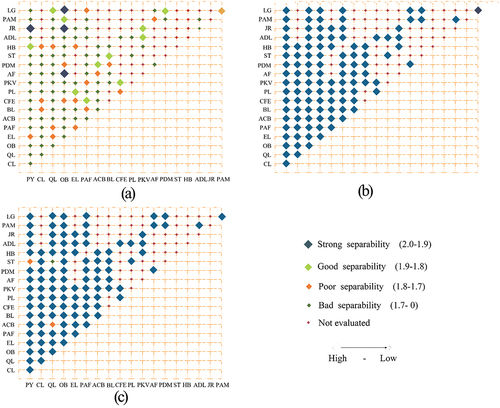
Table 7. Comparison of classification accuracies of different methods in each sub-region.
Figure 13. The spatial details of classification results in forest stand species. (a) Original image, (b) the Forest Management Inventory data, (c) M classification, (d) ROPT classification, and (e) MR classification.
